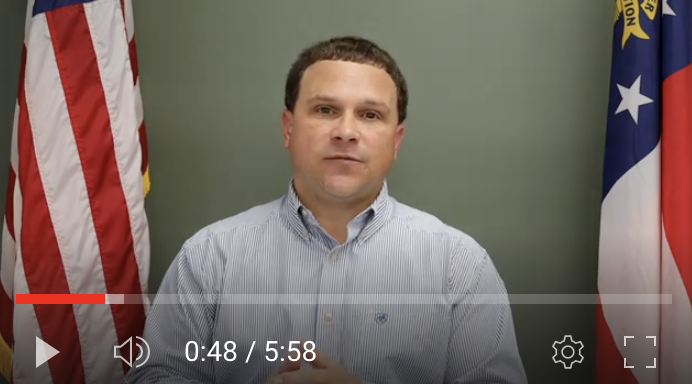Atlanta, GA - Today, Georgia Agriculture Commissioner Tyler Harper and the Georgia Department of Agriculture announced the discovery and eradication of three additional Yellow-legged hornets’ nests in the area near Savannah, Ga. In addition to these new eradications, the Department is announcing a new, biweekly newsletter, the Yellow-Legged Ledger, to provide the public with important updates on our efforts to prevent the establishment of this invasive pest. Since the initial detection of the yellow-legged hornet (YLH: Vespa velutina) occurred on August 9, 2023, the Georgia Department of Agriculture has found and eradicated a total of five nests. Department staff continues to work overtime in coordination with our partners the U.S. Department of Agriculture (USDA) and the University of Georgia (UGA) to eradicate the Yellow-legged hornet from our state and protect Georgia’s #1 industry - agriculture.
“Our Plant Protection Division team has been very busy, and I’m proud to report that in the last two weeks we have found and eradicated three additional yellow-legged hornets’ nests thanks to their tireless efforts,” said Agriculture Commissioner Tyler Harper. “While each nest located and destroyed represents a win for our state and our agriculture industry, we will continue to work overtime to achieve our goal of full eradication. We continue to ask for the public’s help in this fight, and we encourage Georgians to sign up for our new newsletter, the Yellow-Legged Ledger, to receive the latest updates from our team.”
Discovery & Eradication of YLH Nests
Nest 3 - The 3rd yellow-legged hornets’ nest was located by Department staff on the afternoon of October 11, 2023, near the River Crossing Apartment complex in the town of Thunderbolt. It was eradicated that same evening by Department staff and a team of local Pest Management Professionals as well as an arborist. This nest was located approximately 60 feet high in a Pine tree, and despite being the largest nest we’ve discovered so far (roughly the size of an exercise ball) it was well camouflaged. This nest was located using a combination of electronic tagging as well as capturing, releasing, and tracking of hawking hornets.
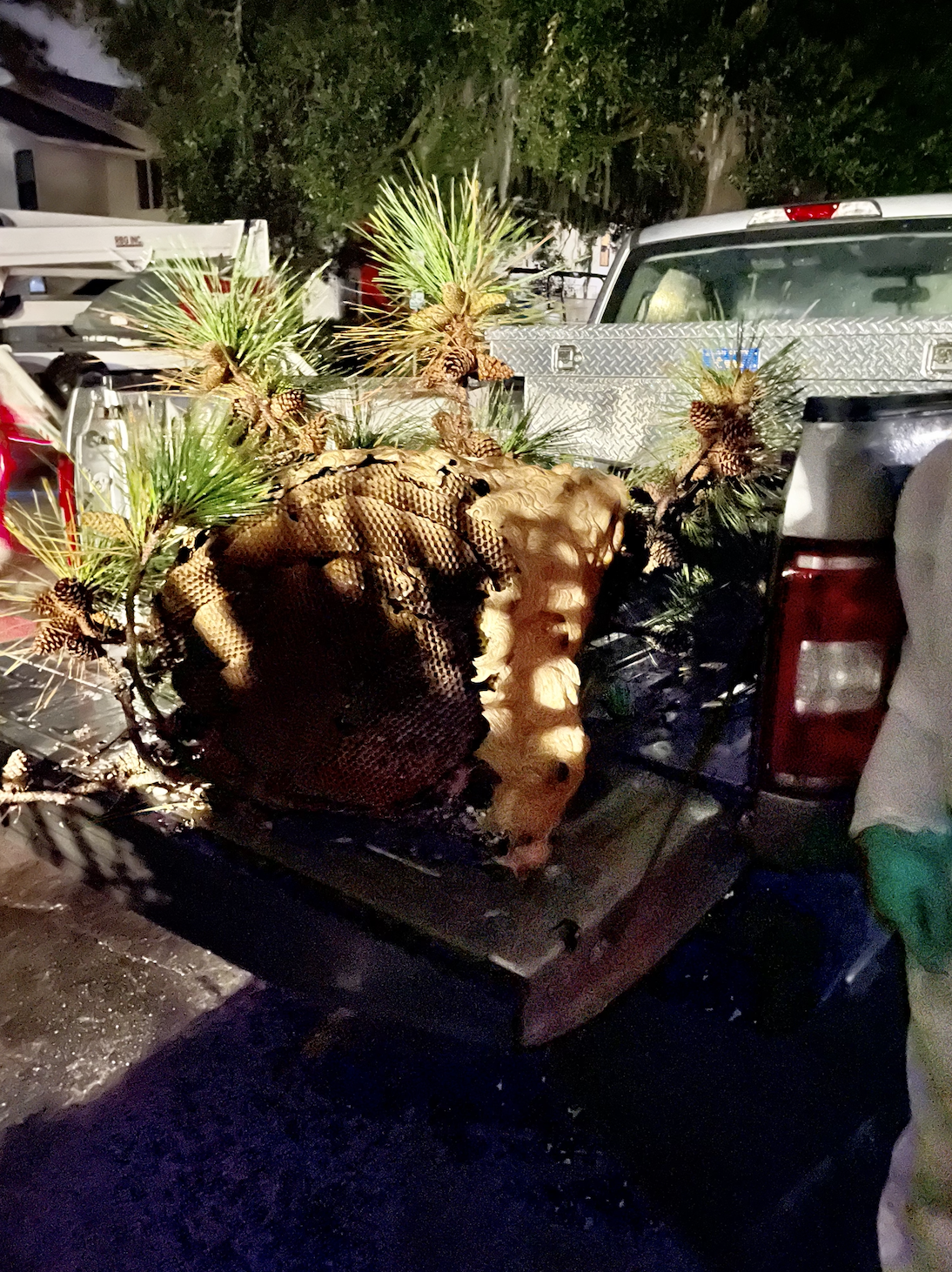
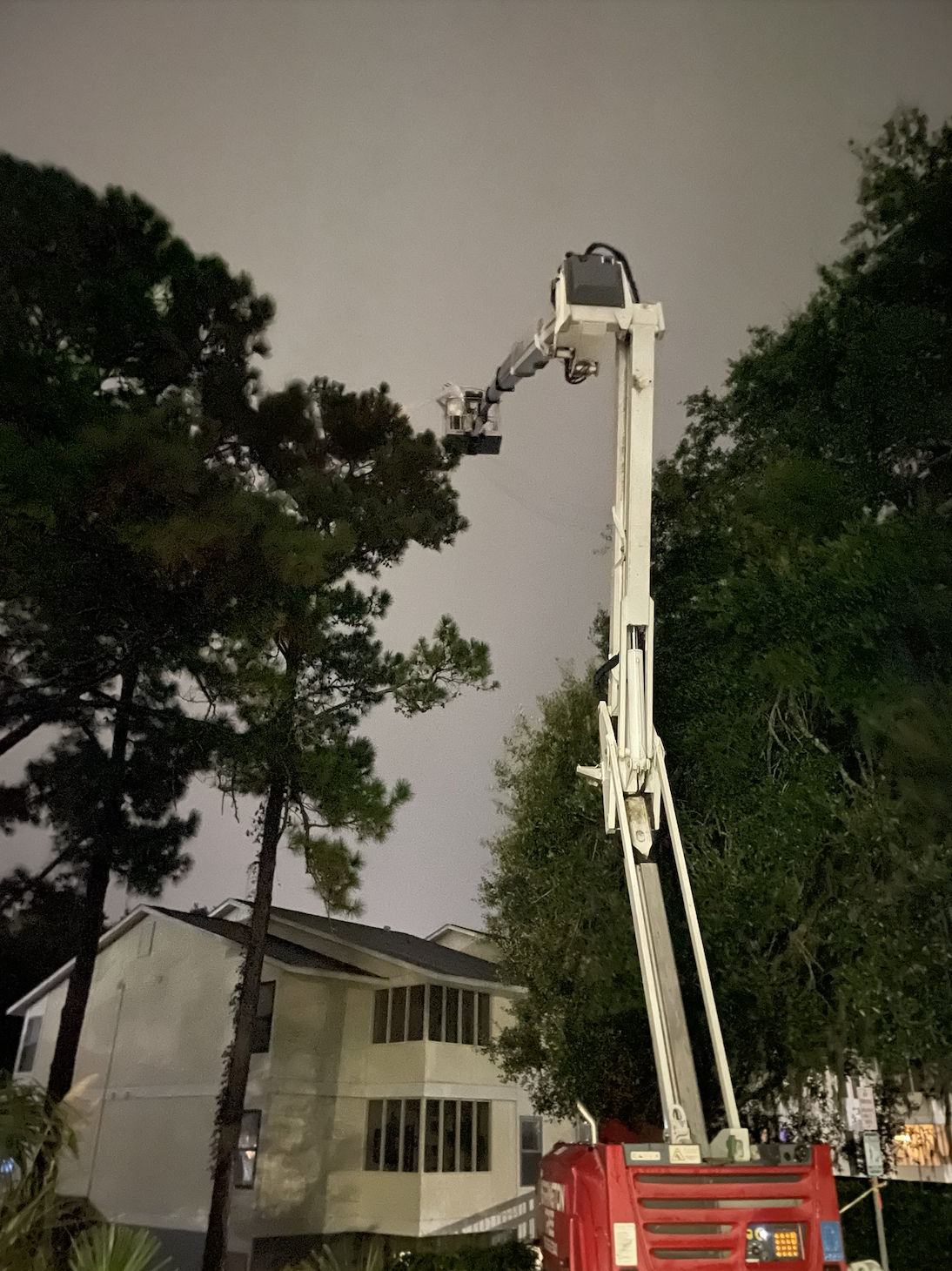
(Top: Nest #3 after being treated & removed, Bottom: Pest Management Professional treating nest via bucket truck)
Nest 4 – The 4th yellow-legged hornets’ nest was located by Department staff on October 18, 2023, at a private residence in the town of Thunderbolt approximately 1 mile north of the location of nest #3. It was eradicated that same evening by Department staff and a team of local Pest Management Professionals as well as an arborist. This nest was located approximately 90 feet high in a Pine tree and was located by capturing, releasing, and tracking hawking hornets that were seen in the area.
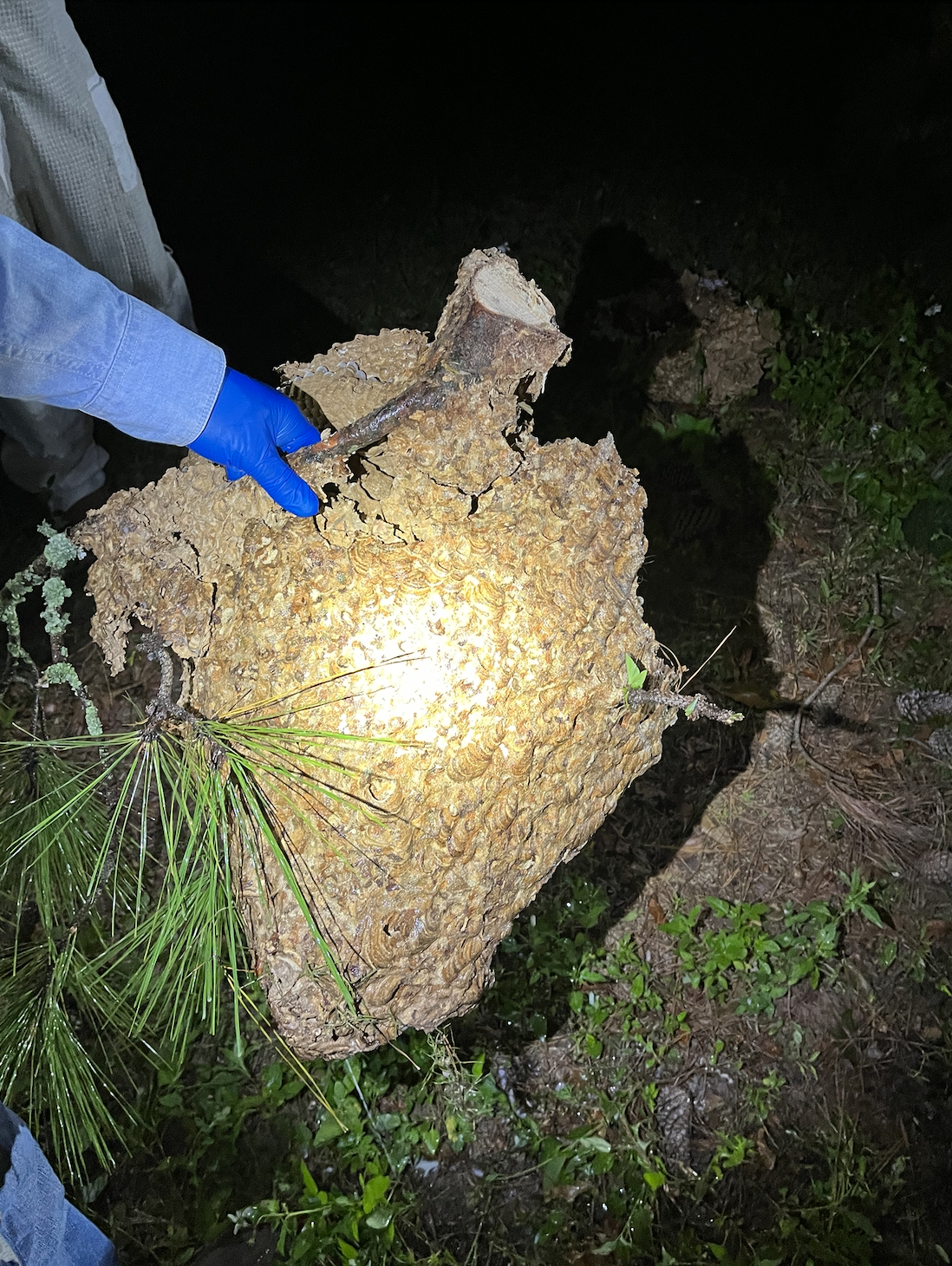
(Nest #4 after treatment and removal)
Nest 5 – The 5th yellow-legged hornets’ nest was located by Department staff on October 25, 2023, near a private residence on Skidaway Island, and it was eradicated last night by Department staff and a team of local Pest Management Professionals as well as an arborist. This nest was located approximately 90 feet high in a Pine tree and was located by capturing, releasing, and tracking hornets back to the nest. While this is the first nest found on Skidaway Island, this location is well within our search area and we do not have reason to believe the hornets migrated outside of the Savannah area.
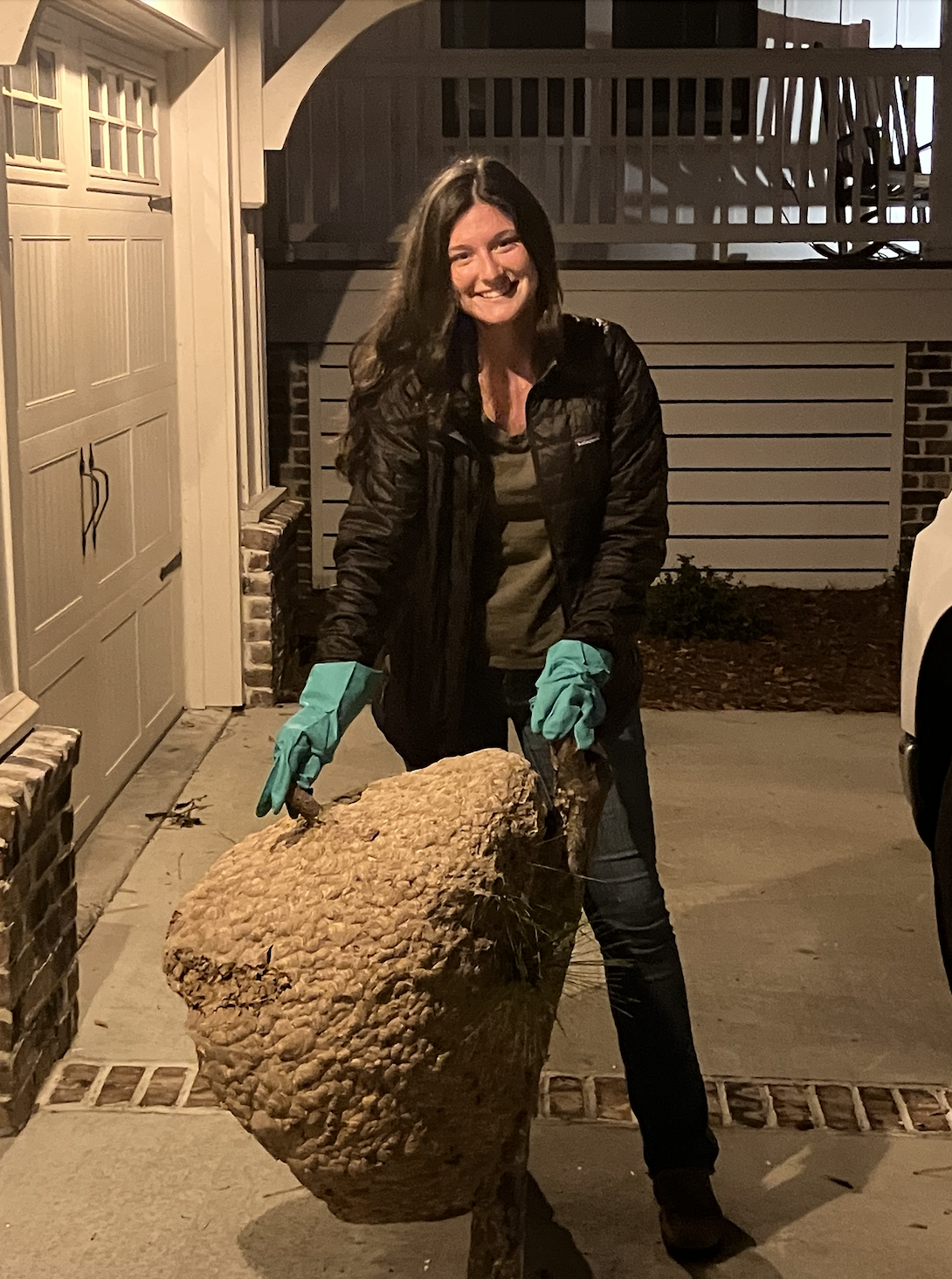
(Department employee Grayson Richardson holds nest #5 following treatment and removal)
Upon initial inspection by Department staff none of these nests appeared to have begun the production of Queens or reproductive males. Samples of dead hornets and larvae from nests 3 and 4 have been sent to our partners at UGA for further analysis and DNA testing. Samples from nest 5 will be sent to our partners at UGA, University of Florida, and USDA.
In order to minimize the risk to citizens in the area, all eradications have taken place at night, and the Department has utilized the same arborist and team of Pest Management Professionals to assist with each eradication. In each case, the eradication process has lasted less than one hour, and no injuries, stinging or otherwise, have been reported by Department staff or our partners on the ground. Cypermethrin has been used in each eradication. 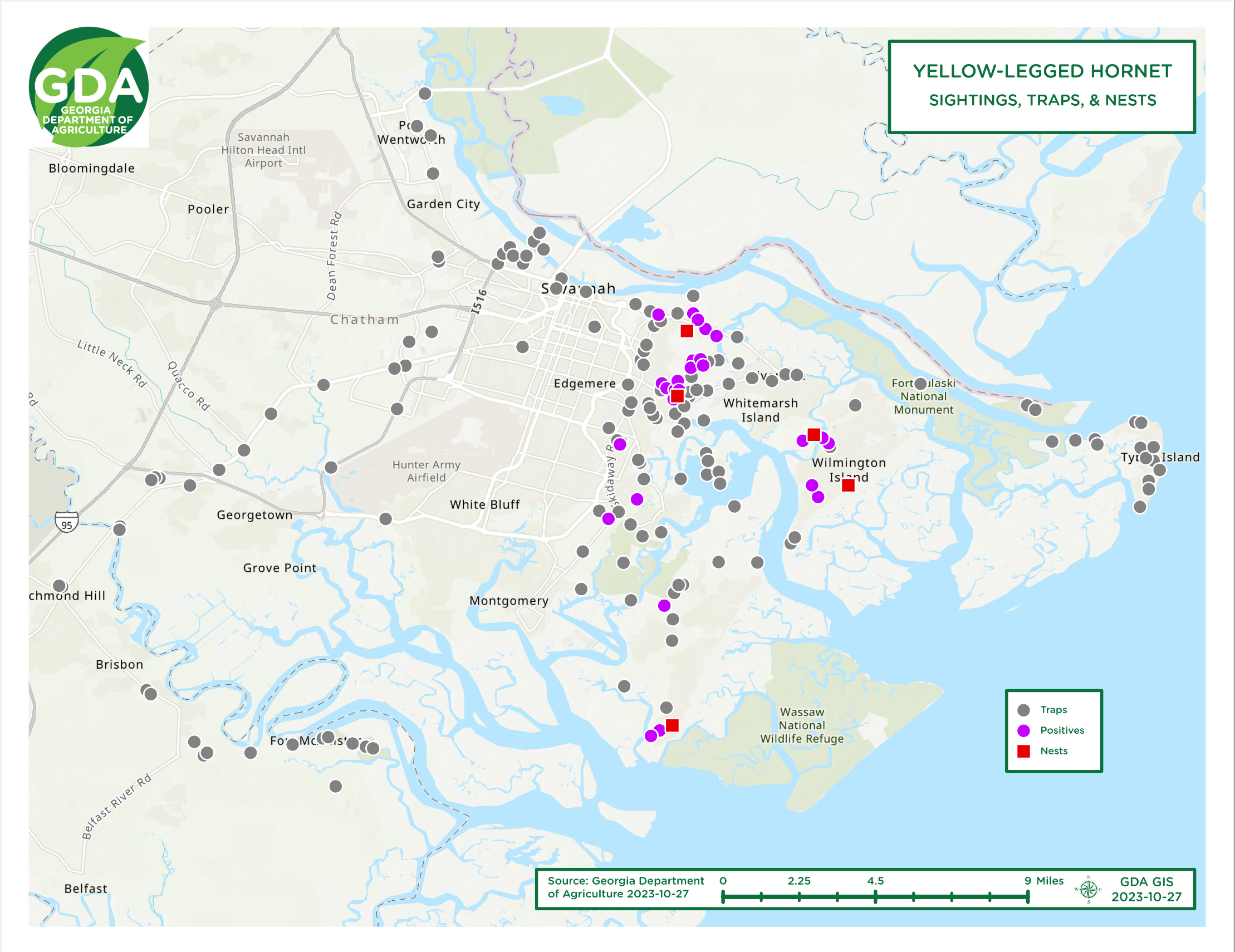
Yellow-Legged Ledger
The public plays a vital role in the fight against the yellow-legged hornet, and the Department is committed to keeping Georgians informed on the latest news and developments as we fight the establishment of this invasive pest. To accomplish this goal, the Department is launching a biweekly newsletter, The Yellow-Legged Ledger, that will be available to any and all Georgians to provide important updates on our progress. We encourage Georgian to sign up for the Yellow-Legged Ledger here or on the yellow-legged hornet page on the Department’s website.
Ground Operations
The Department continues to have two teams of four deployed in the Savannah area that are actively trapping and surveying for additional nests, and these teams have placed 170 traps in the area around the initial detection. The level of hornet activity observed in recent weeks has been relatively inconsistent with periods of high activity as well as periods of low activity. Generally, our teams on the ground have observed that when “hawking” around bee’s nests increases, trap captures are less frequent. Similarly, significant activity around any given trap typically coincides with a decrease in observed “hawking” behavior.
The Department is currently using bucket traps, which are typically baited with a combination of grape juice and brown sugar, but we have also used fish meal and fish fillets. These traps are checked 1-2 times per week by a combination of Department staff and USDA PPQ staff. It is important to note that trapping is not an elimination tool but a monitoring tool to help locate additional nests.
Department staff continue to use every method available to track hornets and locate additional nests. The primary methods include electronic tagging and tracking of hornets as well as capturing, releasing, and tracking hornets by sight. Both methods have been used to successfully locate yellow-legged hornets’ nests.
As we continue our efforts to eradicate the yellow-legged hornet from our state, we again ask the public to report any suspected sightings to the Department via this readily accessible form. Beekeepers have been key in reporting yellow-legged hornets, and we encourage them to continue monitoring their hives and contact us with any suspicious activity. Georgians with additional questions or concerns are encouraged to email us at yellow.legged.hornet@agr.georgia.gov.
###




